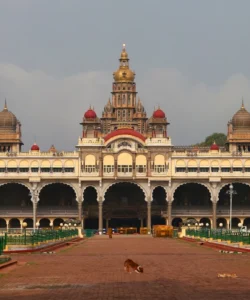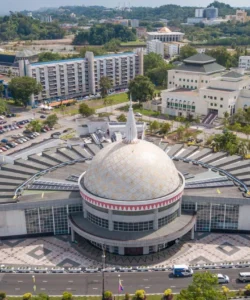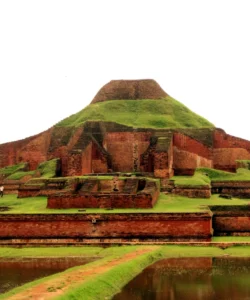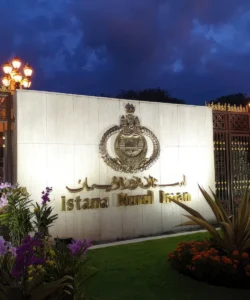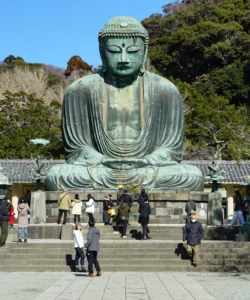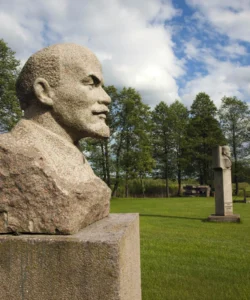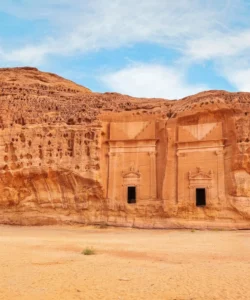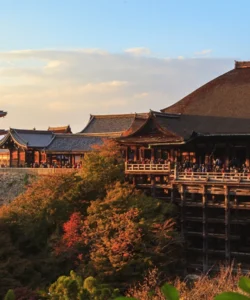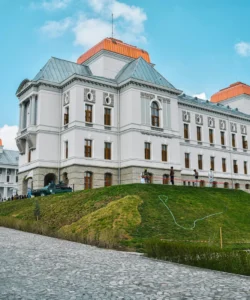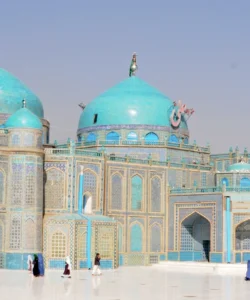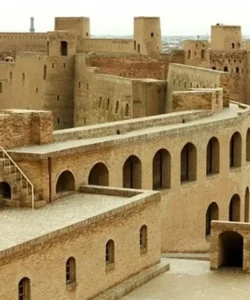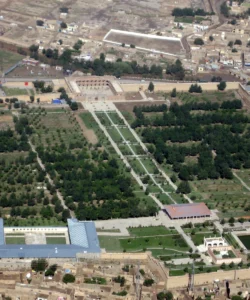The Citadel of Herat, also known as the Qala Ikhtyaruddin, is a magnificent fortress and an enduring symbol of Afghan history. Situated on a hill in the ancient city of Herat, it has stood for over 2,000 years, serving as a powerful military stronghold, royal palace, and a silent witness to the rise and fall of countless empires.
Name: Citadel of Herat (Persian/Dari: ارگ هرات; Qala Ikhtyaruddin, قلعه اختیارالدین)
Address: The Citadel is located in the heart of the ancient city of Herat, Herat Province, Afghanistan. It is positioned on a hill overlooking the city and the Hari River, near the northern end of the old city’s main bazaar.
How to Get There:
Travel to the Citadel of Herat is currently extremely difficult and unsafe for general tourism due to the political instability and security situation in Afghanistan. The following information is for historical context and is not a recommendation for travel.
- By Air: The closest airport is Herat International Airport (HEA). In more stable times, a taxi from the airport to the city center and the fort would be the most common way.
- By Road: Herat is a major city in western Afghanistan, connected by road to other parts of the country and to Iran.
- Within Herat: The Citadel is a central landmark in the old city and is usually a key stop on any historical tour of Herat. It’s often accessible on foot from nearby areas.
- Entrance Fee: Prior to recent events, there was an entrance fee for the fort.
- Best Time to Visit: The cooler, dry months (September to May) are ideal, as summers are very hot.
Landscape and Architecture:
The Citadel of Herat is a monumental fortress that showcases a remarkable blend of architectural styles from different periods, reflecting its long and complex history.
- Hilltop Location and Defensive Walls: The fort is built on an ancient mound in the city center, which served as a strategic advantage for defense. Its massive, inward-sloping defensive walls, buttresses, and battlements are its most prominent feature, built from mud-brick and brick. The walls rise to a height of approximately 18 meters (60 feet).
- 21 Towers: The fort is a large, rectangular structure, fortified with 21 towers that are positioned at regular intervals along its walls, providing excellent vantage points for defense.
- Complex of Palaces and Structures: The interior of the citadel is a complex maze of courtyards, palaces, and halls that were added by various rulers over the centuries. Some of the most notable architectural elements include:
- Ikhtyaruddin Palace: A magnificent palace with intricate Timurid-era tile work, which served as the royal residence.
- Armory and Museum: The Citadel has a small museum that showcases artifacts from Herat’s rich history, including ancient weapons, coins, and pottery.
- Mosques: Several smaller mosques and prayer halls are located within the complex.
- Timurid-Era Tiling: Herat was a center of art and culture during the Timurid Empire (15th century), and the fort still retains remnants of the beautiful turquoise and blue tile work that was a hallmark of the Timurid architectural style.
- Restoration Efforts: The Citadel has been damaged and rebuilt many times over its long history. A recent, significant restoration project, funded by the Aga Khan Trust for Culture (AKTC) and the United States, was crucial in saving it from collapse and restoring its original beauty. This restoration effort, which used traditional materials and techniques, has been widely praised.
- Herat Old City and Hari River: The Citadel overlooks the historic Walled City of Herat and the scenic Hari River, which flows nearby. The view from the top offers a panoramic perspective of the city’s ancient urban fabric.
What Makes It Famous:
- Ancient Historical Significance: The Citadel of Herat has been continuously occupied and rebuilt for over 2,000 years, with its origins tracing back to the time of Alexander the Great. It has witnessed the rule of numerous empires, including the Ghaznavids, Mongols, Timurids, and Safavids, making it a living chronicle of Afghan history.
- UNESCO World Heritage Site (Tentative): The Citadel is on UNESCO’s tentative list, recognizing its immense historical and architectural value as a symbol of Afghanistan’s past.
- Architectural Legacy: It is a testament to the evolution of Afghan and regional architecture, showcasing a unique blend of styles from different periods, from ancient fortifications to the sophisticated tile work of the Timurid era.
- Strategic Military Stronghold: Its imposing size and strategic location on a hill made it an impregnable fortress for centuries, earning it a reputation as a powerful military stronghold.
- A Symbol of Resilience: The Citadel has survived repeated invasions, wars, and earthquakes, and its recent restoration, which saved it from imminent collapse, makes it a powerful symbol of the resilience of Afghan heritage.
- Cultural Center: The Citadel was a center of art and culture during the Timurid period, when Herat was a renowned hub of learning and artistic innovation.
Differences from Some Other Wonders:
- Long and Continuous History: While other forts like the Red Fort or Lahore Fort have a long history, the Citadel of Herat’s continuous occupation and rebuilding for over 2,000 years, tracing its origins back to a potential Macedonian fort (built by Alexander the Great), gives it a much longer and more profound historical timeline than most other historical forts.
- Timurid Tile Work: While Mughal forts have intricate inlay work (Taj Mahal, Humayun’s Tomb), the Citadel of Herat is known for its exquisite and historically significant Timurid-era tile work, particularly its vibrant blue and turquoise mosaics, which represent the pinnacle of a different, but influential, Islamic artistic tradition.
- Hilltop Location and Defensive Function: While many forts are on hills (e.g., Amer Fort), the Citadel’s central hilltop location within a vast ancient city, combined with its primary function as a military stronghold for over two millennia, makes it a different kind of structure than a fortress-palace designed for royal residence.
- Historical Resilience: The Citadel’s story of surviving decades of conflict and neglect and being saved by a major restoration project in the 21st century adds a unique and poignant modern chapter to its history, distinguishing it from sites that have been continuously maintained or less affected by conflict.
- Symbol of Afghan History: While other forts might symbolize a particular dynasty’s power (e.g., Red Fort for the Mughals), the Citadel of Herat is a more holistic symbol of the entire span of Afghan history, representing its role as a crossroads of civilizations.
- Mud-Brick Construction: The use of mud-brick as a primary construction material for its massive walls, though often with brick and tile ornamentation, is a characteristic that reflects the regional building practices and materials of the area.
Citadel of Herat Photos:































